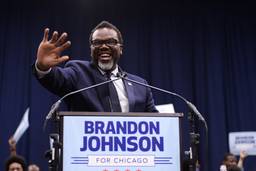Steven Greenhouse on Keeping the Labor Beat Alive
The longtime New York Times labor reporter on the state of the American labor movement and labor journalism.
Micah Uetricht

When Steven Greenhouse announced his retirement from the New York Times in December 2014, after nearly two decades on the labor beat at the paper of record, a collective gasp went up from the American labor movement. Not only was Greenhouse an ace reporter covering unions and workers’ issues at the paper, but his departure left only one reporter, the Wall Street Journal’s Melanie Trottman, covering labor at a major national daily.
The Times has not said whether it will seek a replacement. But Greenhouse isn’t disappearing from the labor beat just yet. He’s already filed his first freelance pieces and plans to write a follow-up to his 2008 book, The Big Squeeze: Tough Times for the American Worker.
Just hours after returning from his first post-retirement vacation, Greenhouse spoke to In These Times about the mainstream media’s fickle interest in workers’ issues, the culture of mediocrity throughout much of the movement and the smart new organizing strategies that could breathe some new life back into labor.
Almost all of your fellow reporters at the New York Times covered beats that were also covered by many other reporters at many other publications nationwide. But when you retired, you were one of the only national labor reporters left. Did that feel lonely?
I started this beat in late 1995, as the metro desk labor reporter for the New York Times, and Peter Kilborn was the national labor reporter. The Washington Post, the Los Angeles Times, the Chicago Tribune, AP, Reuters all had labor reporters. It was good to have the competition — it spurred us all to do better.
After a year or two, Peter Kilborn went onto another beat and I took over both the national and metro labor beat for the Times. Beginning in the late 1990s and over the next decade or so, many news organizations went through a major consolidation and shrunk the size of their news staff, and many organizations stopped having a full-time labor reporter. It felt odd. I felt there was that much more responsibility on me to make sure that when an important tree in a forest fell, that someone — meaning me — was out there covering it.
Since I was the last man standing, all these PR folks, union folks and Human Resources folks would say, “Greenhouse, you gotta cover this! No one else is gonna cover this!” I grew up with a lot of Jewish guilt, and it was very easy for people to guilt trip me.
But over the past few years, dating from the beginning of the Great Recession, there has been a rebound in the number of labor reporters, and I think that’s to the good. It’s good to have competition — it keeps people on their toes. The Wall Street Journal has Melanie Trottman covering labor full-time, Lydia DePillis covers labor more or less full-time for the Washington Post, Alejandra Cancino covers it half-time for the Chicago Tribune, the Boston Globe and LA Times are covering it more, ProPublica did a wonderful series about temp workers, McClatchy has done a terrific series about independent contractors. We’ve seen this rebound because worker issues really rose to the fore during the recession. We’ve seen the Fight for 15 movement, increasing income inequality, increased talk about wage stagnation — all of these developments have pushed many news organizations to say “Hey, we really need someone covering labor issues, because they are one of the most important issues out there in the national political and economic conversation.
The multiplicity of news websites—In These Times, The Nation, Huffington Post, Slate, Salon — they also have been covering labor pretty aggressively. Partly because a lot of them tilt to the Left, and they know who their readers are, and partly because they have smart editors who see what the important news issues are in the nation nowadays.
You’ve seen the decline of the labor movement firsthand over the last several decades. Do you think the majority of union leaders really comprehend the extent of the crisis that unions are in? Not just intellectually, but are they dedicated to spending a good chunk of their time figuring out how to save the ship before it’s sunk? Or are they just thinking, “Well, we’ve had a good run, but I’m just going to ride this thing out until it’s done”?
The majority of leaders of major unions — the Steelworkers, the Auto Workers, SEIU, AFSCME, the AFT, CWA — they see that there’s a crisis, and they’re trying to get things going. They’re all doing more organizing than a few years ago. But one of the major problems unions face now, is even if they’re doing 20% or 30% more organizing, it’s still not nearly enough to overcome the longer-term structural trends that are reducing union density.
The growth of the gig economy, of independent contractors, of part-time workers, young people often knowing very little about unions, the greater employer resistance to unions — there are just a lot of trends in society that are undercutting unions. And even if unions increase organizing modestly, even if they organize 100,000, 200,000 workers in a given year, it’s still not enough to reverse labor’s slide. That would require much larger organizing drives and a much greater percentage of success than we’ve seen over the past few decades.
I’m not sure whether unions have the will to do that. And even if they had the will, I’m not sure whether they have the organizing expertise and money to do that.
Has labor coverage declined because the overall labor movement has declined? Or is it more about shifting priorities of mainstream media?
Unions used to be a very influential part of the economy, and thus were a big part of the national conversation. They no longer are. Union density is down to 11.1%, one third of where it was in the 1950s; union density in the private sector is 6.6%, less than one fifth of what it was in the 1950s; the number of strikes is probably about one-thirtieth per year of what it was in the 1940s and 1950s. Labor unions as an entity are just not making as much news as they were 60 years ago.
At the same time, many newsrooms have cut their staff in large numbers, and many decided that labor coverage is more expendable than some of the other issues. They just said that labor isn’t as sexy. There isn’t as much demand for labor as there is for Beyoncé or Taylor Swift.
I think some of those organizations got rid of their labor reporter because they thought labor coverage was often too sympathetic towards workers and unions. I know this was true at one organization — I won’t say which — where I thought the reporters’ coverage was excellent and pitched straight down the middle, but publishers thought it was too sympathetic to labor and not sympathetic enough to business. That reporter got kind of pushed out.
When you started on the beat, unions were essentially acting in the same ways as the old industrial unions — approaching campaigns the same way, engaging in the same kinds of actions — and assumed that the media would come running. Fast forward to today, where the most important labor campaign in the country, Fight for 15, is, some would say, principally based on capturing media attention. What does this mean, that labor has gone from trying to impede production on the factory floor to now staging actions so that reporters will come running?
The very first story I covered as a labor reporter in late 1995 was the election of John Sweeney as president of the AFL-CIO. He tried very hard to get the unions in the AFL-CIO to switch to an organizing model from a business union model. And after he was elected, many unions started to do more organizing. But still, most of what most unions did remained the service model.
Unions have felt very torn. On the one hand, they’ve realized that to grow, to rev up the union movement, they really need to adopt the organizing model. But they also realize that their members often like the service model.
Even with Sweeney’s efforts to convince unions to do far more organizing, it still wasn’t enough to reverse the decline in union density. In looking back at it now, we can see that Sweeney’s push and the push in the 2000s fell short in reversing labor’s decline.
Now unions are trying to figure out what they can do — “How do we get out of this hole? How do we get create some excitement for labor?” In his new book Only One Thing Can Save Us: Why America Needs a New Kind of Labor Movement, Tom Geoghegan says it’s not worth having a strike at all unless that strike gets huge attention and huge public support. You don’t want a strike that’s just ignored as a private dispute — that doesn’t call into play larger issues.
In my view, the Fight for 15 is a smart effort to tap into the widespread resentment against low-wage jobs. It’s very hard to unionize young people and people in these kinds of marginal, low-wage jobs, because people are often scared of getting fired. The Fight for 15 has done a very impressive job in mobilizing a lot of people. And one way it’s done that is by mobilizing the news media to write about what’s going on.
The Fight for 15 is a really interesting experiment in 21st century union labor mobilization. It’s not a typical labor organizing drive where they’re trying to get 51% of people to vote for a union — it’s to create a mass movement to pressure McDonald’s, Burger King and Wendy’s to cry uncle and say, “Okay, we’ll agree to $15 wages, we’ll agree to neutrality to allow you to unionize.” What the Fight for 15 movement is demanding is very ambitious. But to get there, they will still have to exert far more pressure than they have thus far.
But for labor journalism, what does this transition to media-focused union organizing mean?
I don’t think the only reason Fight for 15 holds these strikes is to get press attention. One could debate whether it’s a majority of what they’re doing. Clearly they want media attention, but they also want to mobilize people.
I was interviewing Karen Nussbaum, head of Working America, and she said one of the huge problems that labor and progressives in general face in America face is that if they are going to achieve anything substantial, they have to get people to believe in collective action again. And my strong sense is that the strategists behind Fight for 15 are trying not just to get media coverage, but to get Americans to believe in the power of collective action.
You have not only reported on unions’ campaigns, but also unions’ dirty laundry. Why is that important?
When I started covering labor, the Teamsters, LiUNA, the ILA, the UFCW, HERE were all corrupt unions. The federal government, prosecutors and some union leaders have done a very good job over the last two decades in rooting out a lot of that corruption. I think the Teamsters, UFCW, LiUNA and HERE are much cleaner unions than they were two decades ago. (I still think it’s a problem in the ILA, in the Operating Engineers — they have a ways to go.) But whether one’s writing about business or politicians or the NFL or unions, if there’s wrongdoing, the press has to hold those wrongdoers accountable.
A big problem in many unions is that some salaries are still way too high, some union leaders don’t work hard enough, some union leaders don’t work hard enough to expand the unions to serve. Too many times you call a union officer at 4:00, and all the leaders in the local area have gone home. Too many union officials see their jobs not as a crusade to help workers, but as a way to make a good, fat income while only working 7 hours a day.
That’s less true now than it was 5, 10, or 15 years ago, because I think John Sweeney tried to kick a lot of union leaders in the derriere, to say, “You have to do more. You can’t see unions jobs as sinecures, as a way to hire your family members.” I think people see that [union leaders] have been far too complacent, too many union officials saw their jobs as sinecures, didn’t do nearly enough to involve and mobilize the rank-and-file, they didn’t do nearly enough organizing.
My guess is that when labor historians look back, they will say that, in the 1970s and ’80s, and despite John Sweeney’s noble efforts in the 1990s, there just hasn’t been enough effort to grow labor, to organize more workers. And now labor has shrunk so much, treasury has declined so much that they’re at a nearly-critical point that might make it extremely difficult to turn around, even if it did everything right.
And this culture still exists at the very moment when the ship is sinking.
We labor reporters see what’s happening in Washington, with the president of the national, international unions. But it’s much harder to know what’s happening with various locals in Cincinnati or Boise or Phoenix. I remember in the Carpenters’ Union, I was pretty shocked to see many business agents who were making $120,000, $130,000 a year — generally more than many New York Times reporters were earning. And I thought well, instead of having all these business agents making $120,000 a year, maybe it’d be better to have two organizers making $60,000 or $70,000 a year.
Joe Hansen, President of the United Food and Commercial Workers, set out to really turn around the culture of his union. But his union was in many ways a group of family-run fiefs. Despite his best efforts, Joe was unable to get a lot of UFCW locals in various cities and states to really become to become the kick-ass organizing locals he wanted. He had very little power over them. And they didn’t do much organizing.
I think one of the biggest problems the union movement has had over the last two decades is this huge growth in retail — not just Walmart, but Target, Kohl’s, Dollar General — and there’s been extremely little in the way of organizing efforts. Again, when labor historians look back, they’re going to say, “Where was the labor movement in trying to organize retail?” After Walmart became a humongous company, UFCW belatedly tried to organize it, but by that point, Walmart was already too powerful to confront.
We read about some recent unionization successes — at Delta and American Airlines, for example. And these are important. But I think labor needs 3, 5, 7 times as great a level of organizing if it’s really going to turn things around.
Over the years, you’ve also covered the rise of “alt-labor” organizing. How do you feel about the new kinds of organizing models you’ve seen?
While on one hand there have not been enough formal unionization victories, compared to ten years ago, there is a growing restiveness among workers, a growing mobilization, both in the formal labor union sector and in the kind of “informal” worker sector. Fight for 15 is the biggest labor mobilization we’ve seen for years, OUR Walmart is gathering momentum. It’s still not enough to cause Walmart to agree to major changes, but we’ve seen some of these worker centers do very impressive things. The Coalition of Immokalee Workers in Florida has won extremely impressive wage gains and improvements for tomato workers. The Los Angeles Alliance for a New Economy has convinced the city council in Los Angeles to agree to a $15.37 wage for hotel workers; it’s achieved major gains for thousands of workers, with the help of organized labor, with the help of Unite Here.
The Workers’ Defense Project in Texas has won some modest gains for some construction workers to $12 an hour, it’s won workers’ comp guarantees, it’s won safety training. This is not nearly as much as the UAW or the Steelworkers won in the 1950s and 1960s, but in a place like Texas, in this day and age, those are gains not to be ignored.
So there is growing mobilization, growing sophistication. There’s something in the air — and more going on than there was 5 and 10 and 15 years ago. Whether that will be enough to create a new labor movement, to really begin to turn things around for workers, is the big question.
Can union supporters and pro-labor publications cover the labor movement well?
I am not a labor historian, but I imagine if one were to look back at labor’s huge organizing days in the 1930s and ‘40s, there were surely some pro-union journalists writing for lefty and union journals, and I imagine that their writing helped propel organizing. At a time when unions continue to try to get their act together, they are certainly aided, not hurt, by writers for various websites who are openly pro-union.
But if these journalists are too uncritical and too enthusiastic about every single thing labor does, it’s a problem. Union leaders often make mistakes: Some of them are too complacent, some make strategic mistakes, some are still corrupt. And it’s important that journalists, whether for the New York Times or for In These Times, hold labor leaders accountable, just as they hold business leaders accountable.
One of the big structural problems unions have had going back 50 years is that union leaders can be very mediocre. The union leaders who’ve done next to nothing to help workers can still remain in power for 20 or 30 years. When corporate executives do a lousy job, they’re out on their behinds very quickly.
I think, again, when historians look back as some of the reasons labor has declined, I’m sure one of the things they will point to is the structural problems in unions themselves — that there were not enough built-in incentives for union leaders to do more to help their members increase wages or to increase membership; that they could just coast year after year.
Still, though, I think that what labor has going for it is that many millions of Americans see that something is fundamentally broken in the economy. There’s real dismay about wage stagnation, income inequality. And the question is whether that can be translated into some type of movement that will lead to collective action, to collective voice, to increased wages and to make sure that when companies do well, they share more of their profits and prosperity with their workers.
This is an extended version of an interview that first appeared in the March 2015 issue of In These Times.
Micah Uetricht is an editor at Jacobin magazine. He is a contributing editor and former associate editor at In These Times, and the author of Strike for America: Chicago Teachers Against Austerity and coauthor of Bigger Than Bernie: How We Go From the Sanders Campaign to Democratic Socialism, and is currently at work on a book on New Leftists who took jobs in industries like steel and auto to organize on the shop floor.









